Nowadays, software as a service, or SaaS in short, is a revolutionary way for businesses to organize their software.
As the global SaaS market is projected to reach $887.05bn by 2030, this approach is no longer just a trend. It is a prevailing model for software delivery. Whether startups are looking to launch quickly or large enterprises seek scalability and cost efficiency, SaaS is a go-to model for their digital solutions.
When you decide to build a SaaS product, this model provides dozens of benefits, all of which make it extremely efficient. Thus, in this article, we’ll figure out why to use SaaS through the essential benefits it provides, regardless of the business size and niche.
Top SaaS benefits and features
When it comes to identifying the most potent software as a service benefits, this type of software offers a variety of them. They affect different parts of your business, supercharging its efficiency. So, let’s list them.
Security and reliability
For any modern solution, security is paramount, especially for SaaS. Thus, SaaS providers usually emphasize investments in robust security measures to protect any data and software from threats.
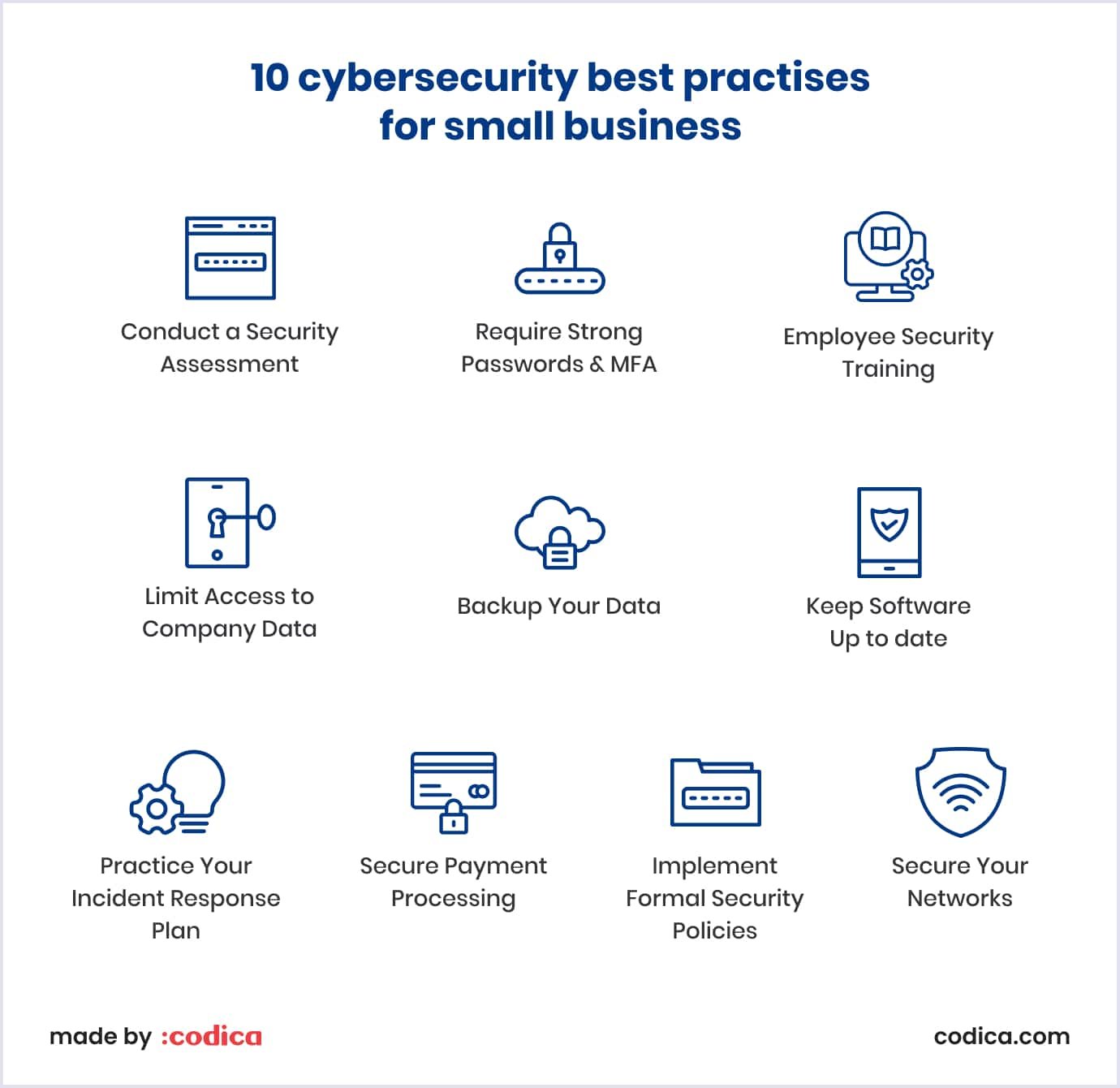
In this regard, SaaS utilizes many cybersecurity practices, including encryption protocols, complex authentication systems, and backup measures. Additionally, SaaS offerings often boast high uptime rates, minimizing downtime and ensuring continuous access to essential tools and resources. For instance, in SaaS solutions:
- Data are encrypted in transit (via TLS) and at rest, meaning prevented unauthorized access;
- Multi-factor authentication (MFA) and single sign-on (SSO) strengthen account security and reduce breach risks;
- The uptime makes 99.9%+ as guaranteed by SaaS providers, with monitoring systems to detect and fix disruptions quickly;
- Automated backups and failover systems ensure business continuity in case of outages or data loss.
Lower costs
SaaS operates on various business models, including tiered pricing, subscription-based, or freemium models. Each model has its own ups and downs. However, all of them are straightforward:
- Freemium, a no-cost free plan plus advanced features as a paid plan, which can use different tiers;
- Flat pricing for a one-time fee, monthly or annually;
- Usage-based/pay-as-you-go charging consumers for actual use of SaaS;
- Per user pricing with collecting a fee per each user account;
- Tiered pricing, which provides different subscription plans;
- Hybrid pricing pairing different business models.
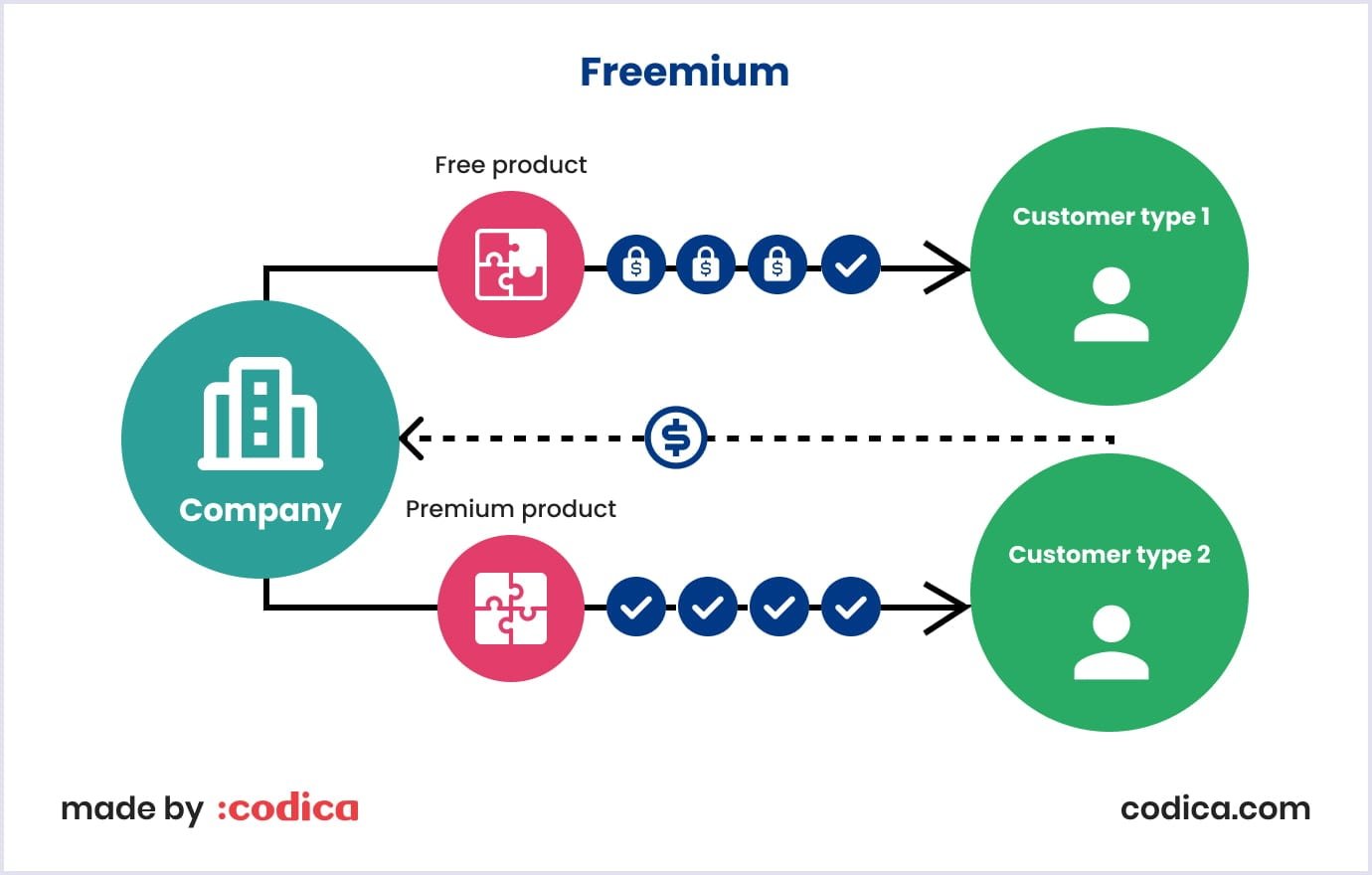
Therefore, an easily forecasted pricing model removes the necessity for significant initial investments in software licenses and infrastructure. Moreover, SaaS providers take care of maintenance, updates, and support, consequently lowering IT expenditures for businesses.
Automatic updates
Considering that SaaS applications work entirely on the web, they need to be regularly updated. Fortunately, gone are the days of manual software updates that disrupt workflow and require a lot of resource allocation.
With SaaS, updates are applied automatically by the provider, ensuring that your system is always running on the latest version. This approach not only saves time but also ensures that you have access to new features and improvements without additional effort on your part.
Faster deployment times
Conventional software implementations are often protracted and intricate, demanding considerable time and resources. Conversely, SaaS solutions can be swiftly deployed, sometimes within mere hours or days.
As a result, you can start using the software quickly, which helps you reap its benefits sooner and improves productivity and efficiency in your organization. SaaS removes the need for complex installations or on-premises infrastructure, reducing IT overhead. Automatic updates keep your system secure and up to date without extra effort.
Scalability
One of the reasons businesses use SaaS over other technologies is scalability. With other solutions, they may need to change the architecture and many other aspects to grow the app. With SaaS, it is done much easier. Cloud automatically allocates resources if demand grows and keeps performance at a high level.
Scalability is crucial for managing the growth trajectory of your business. SaaS solutions have enough flexibility to scale operations seamlessly. This enables you to promptly adapt your resource allocation without incurring avoidable expenses. This way, you can ultimately guarantee that your business maintains its agility and competitiveness in the market.
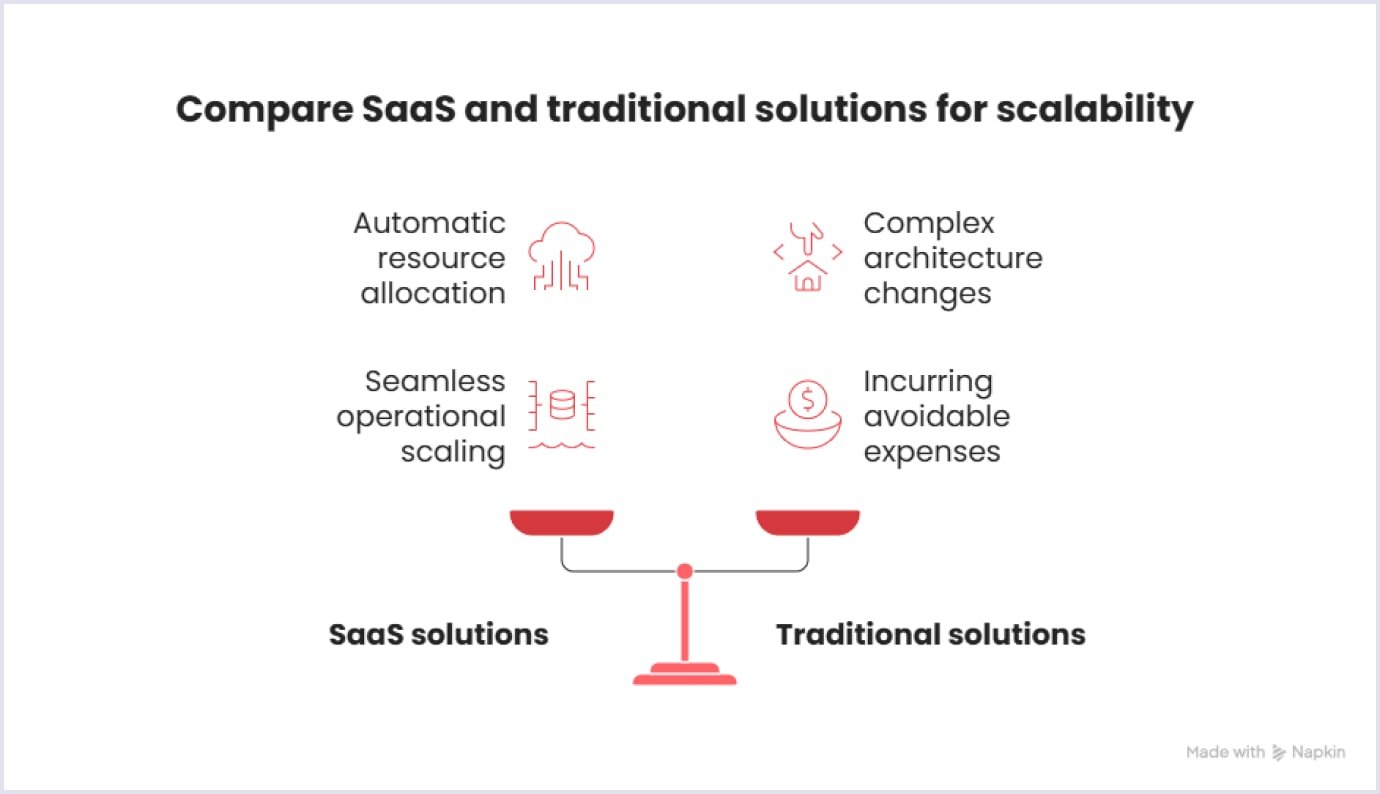
Increased flexibility
Thanks to the many options to choose from in business models, tech stack, and other aspects, SaaS solutions are very flexible.
- From the users' perspective, accessibility across various devices and platforms is effortless. Such flexibility facilitates remote work and seamless integration with other tools and systems.
- From the developers’ perspective, SaaS solutions are comparatively easy to work with. There are dozens of software development tools on the market, as well as a broad choice of database solutions and security measures, all of which can be implemented in the app.

Better collaboration
Among all other benefits of SaaS model, its adaptability to collaboration is crucial. After the pandemic, online collaboration became an essential aspect of any business or venture. SaaS solutions, as you might have guessed, are great at this.
Their availability and robustness allow them to be used with any software and platform. They provide dozens of features perfectly suitable for such a type of usage. Real-time document editing, shared dashboards, and instant messaging integrations make teamwork seamless and accessible in different locations at once.
As an example, take a look at Google’s products. Docs, Sheets, and Slides can freely be used online and offline with a smartphone or a laptop. Other tools, for instance, offer chats and video conferencing, enabling teams to work seamlessly.
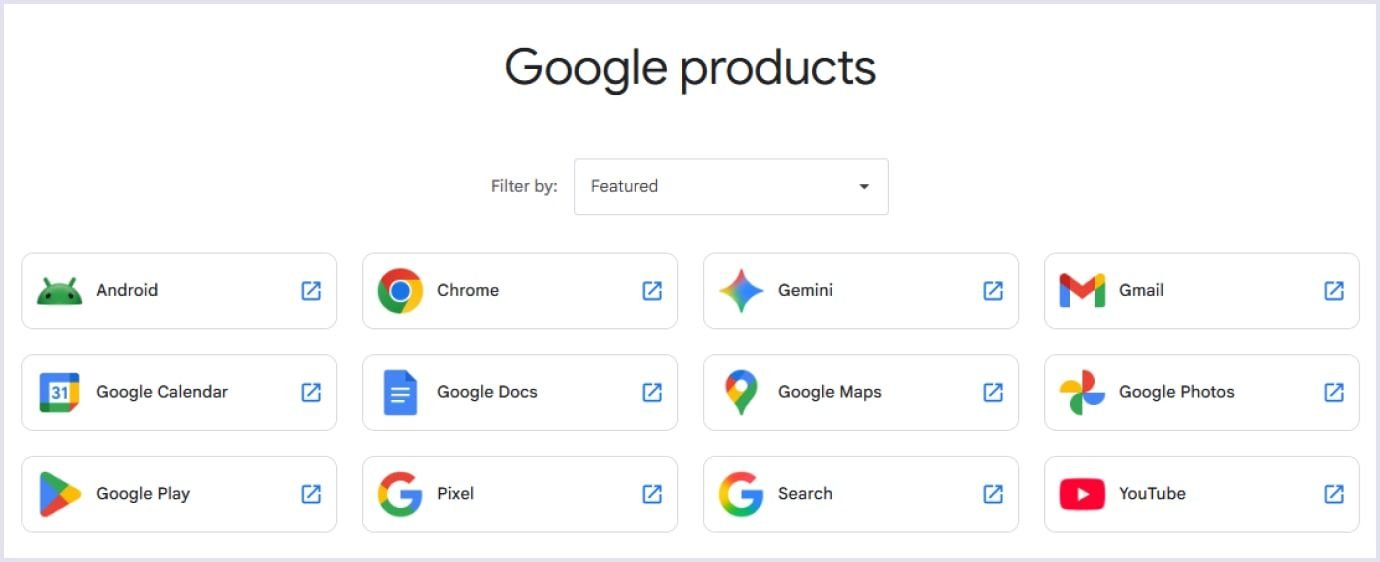
Source: Google
Support users love
With the range of features they provide, SaaS products are easy to use and gladly adapt users to the functionality of the product. With comprehensive support, both from the community and the product team, SaaS apps help users get the most out of their software.
Notion would be a fitting example. Although it offers dozens of things to do, Notion provides templates, guides, and documentation to help those who are a bit lost in the software. Additionally, it boasts a great community that creates customizable templates on its own while supporting newcomers on Reddit, X, etc.
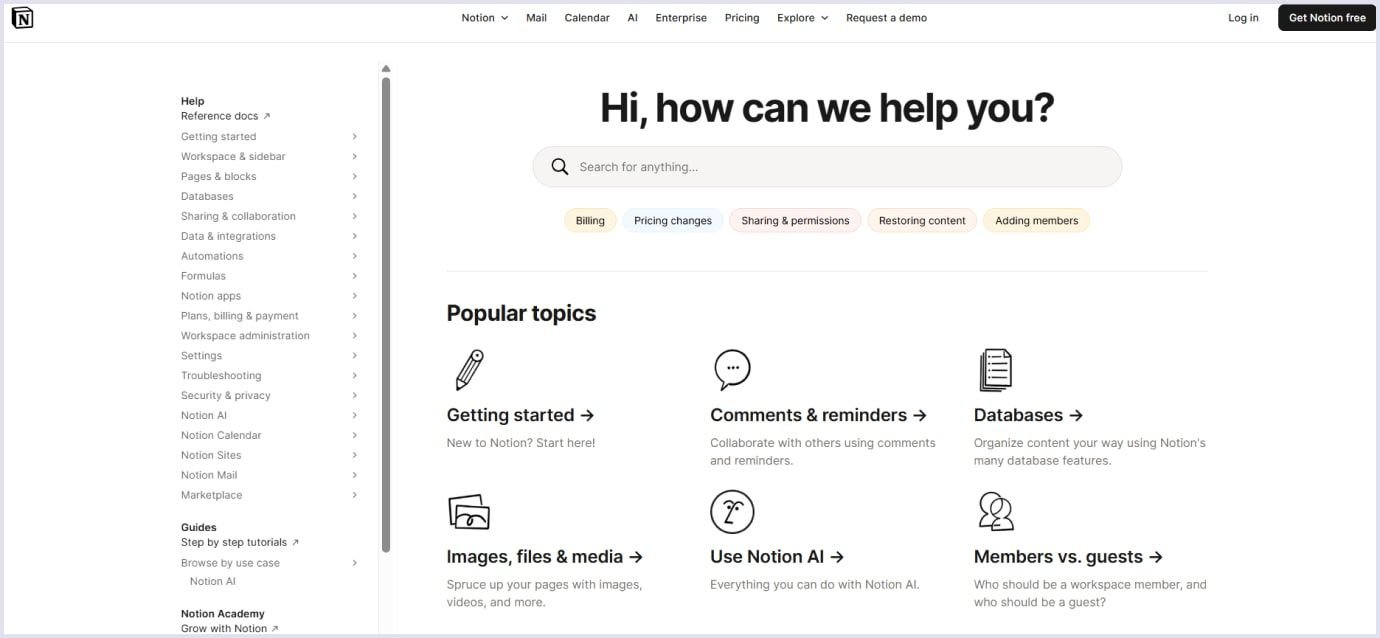
Source: Notion
Easier integration
SaaS tools often work great in pairs with others. Thus, they are often designed with integration in mind, offering application programming interfaces (APIs) and various connectors that enable seamless connectivity with a wide range of third-party applications.
Let’s take a look at Stripe. As a SaaS solution, it offers secure and fast payment options to businesses. Hence, it works as a great integration on many services, ranging from marketplaces to marketing solutions. Needless to say how important it is to make your SaaS tools integratable. Such an approach can not only boost the solution but also create space for collaboration with other tools.
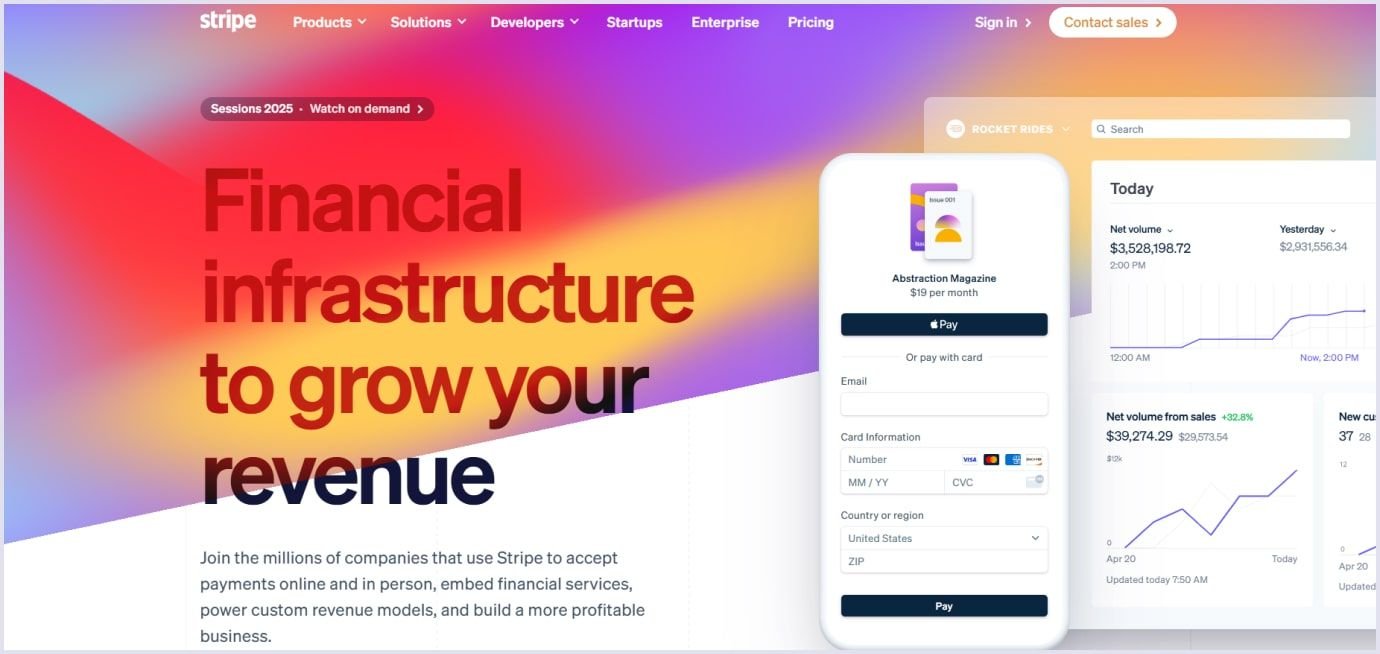
Source: Stripe
Try it before you buy it
Thanks to their accessibility, numerous SaaS tools provide free trials or demo versions of their software. This approach allows users to test the software before making a commitment. By letting users try everything before buying, you can greatly increase the overall ratings of your SaaS as well as create a like-minded community of people who truly value your product.
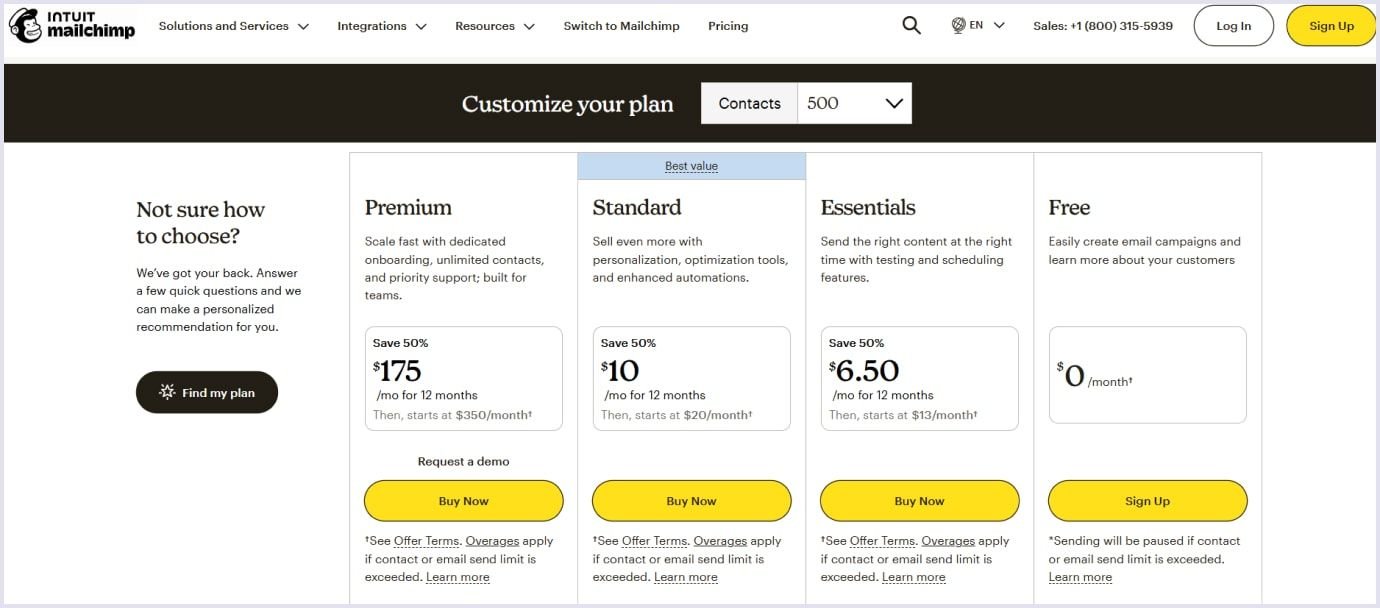
Source: Mailchimp
Environmentally friendly
Although it may sound unexpected, SaaS solutions are inherently more environmentally friendly than traditional software models. How come?
Well, when it comes to SaaS development services, the solutions made leverage shared infrastructure and greatly optimize resource usage. As a result, they decrease energy consumption and mitigate the carbon footprint linked with software delivery.
Moreover, cloud-based hosting diminishes the requirement for on-premises hardware, thereby reducing environmental impact even more. Opting for SaaS development allows you to contribute to a more sustainable future while still providing robust and high-performing technology.
Codica’s expertise
Let’s take a look at one of our projects to supplement the benefits listed. CakerHQ is a SaaS-based platform the Codica team developed for an Australian market. This platform unites professional cake makers and customers.
For cake makers, it provides a space to showcase, promote, and sell baked goods across Australia. For buyers, the platform serves as a marketplace where they can explore different artists and choose the best treats for any occasion.
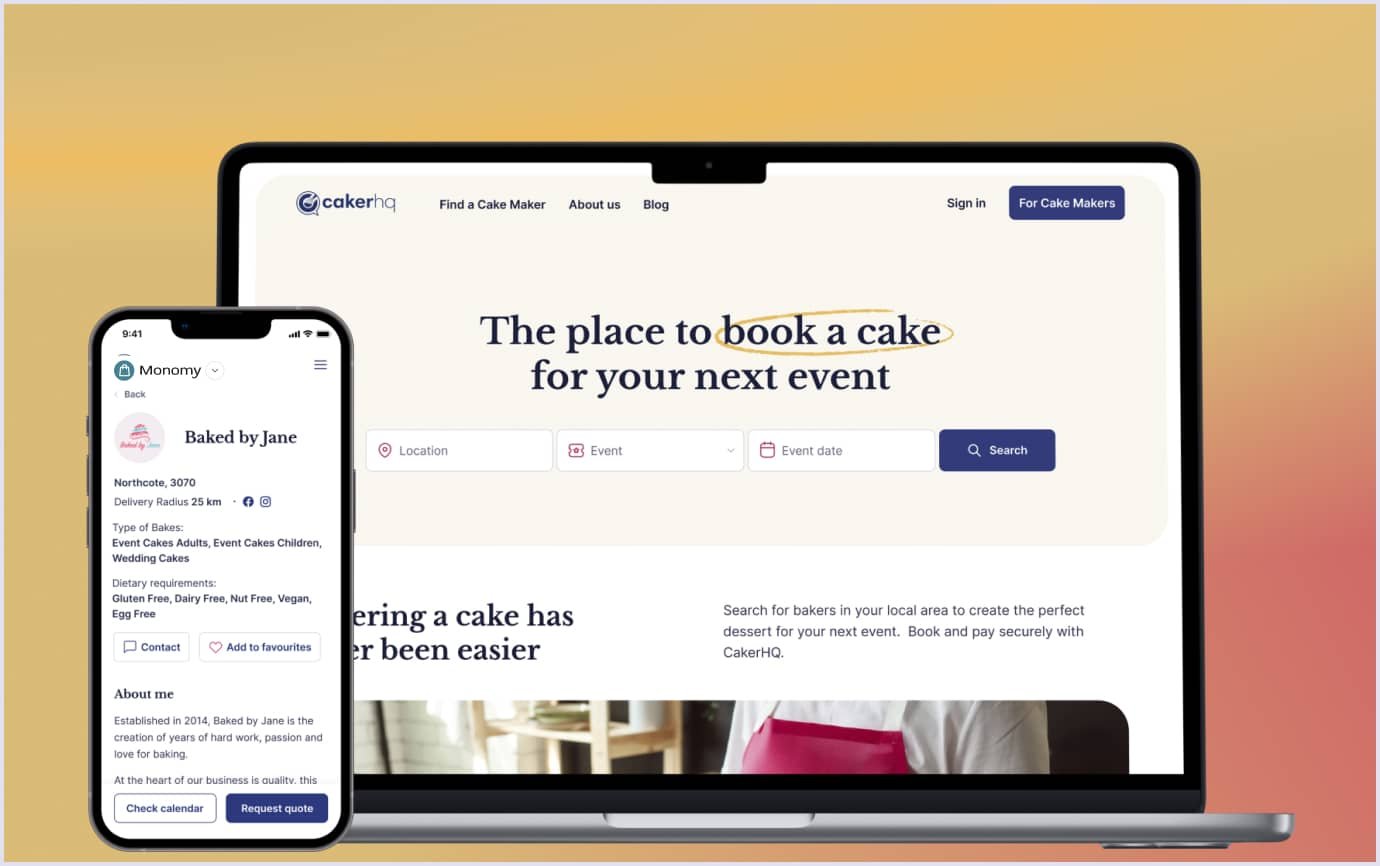
CakerHQ comprises everything people love about SaaS. It is secure, performant, and extremely scalable. Working on a subscription basis, the platform boasts a clear business model which can be easily adjusted. Here are several results our team delivered in this project:
- The quote system is transparent and convenient, strengthening the relationship between buyers and sellers;
- API integrations allow customers to discover locations of cake makers and relevant delivery options;
- The SaaS works perfectly both on desktop and mobile devices;
- Neat and pleasant UI/UX design makes the platform a delightful place to make purchases;
- The Stripe integration makes the SaaS solution secure for buying and selling.
Conclusion
So what? Do SaaS benefits look good enough for you to try it? At this point, even considering developing it is a solid step. Apart from the SaaS advantages we listed, there are others that you uncover through various aspects, such as testing, development, design, etc.
Thus, feel free to refer to our blog about custom software development not to miss a thing about SaaS software development. Alternatively, if your decision is set, we’d be glad to discuss the details, so contact us, and our expert team will guide you through all the intricacies.
